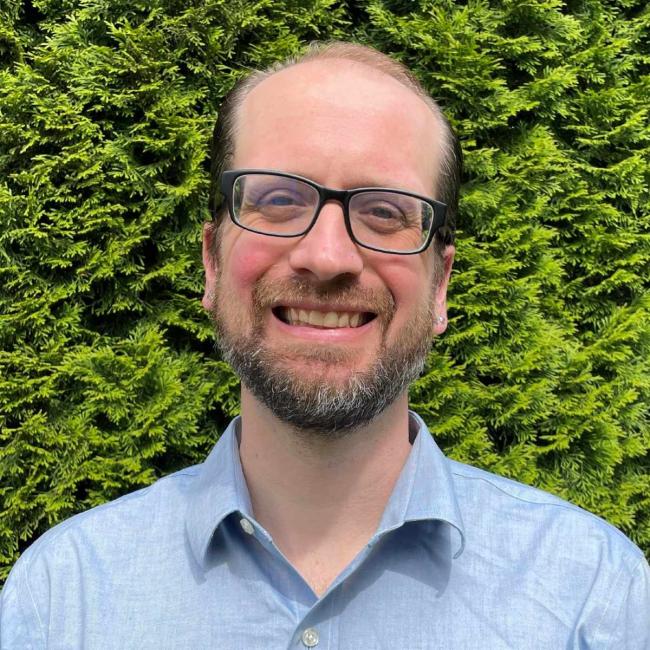In the Spring of 2007, Rob began his role as the Bear Aware Coordinator. Over his two years in the position, he developed a love for the East Kootenay that has yet to fade. At the time, the position was a collaboration between the BC Conservation Foundation, in particular a program called the BC Conservation Corps, and Wildsight Kimberley Cranbrook. The position offered Rob an opportunity to engage in hands-on conservation engagement by teaching the community bear safety and ways of reducing human-wildlife conflicts. The BC Conservation Corps offered short, contract-based programs that were geared toward those who were near the end of their undergraduate studies. They hosted a number of positions across BC such as Water and Air Quality Data Analyst, Nature Interpreter, and Bear Aware Coordinator – all of which Rob was lucky enough to experience.
The Bear Aware Program was a pivotal role for Rob, and it changed the direction of his academic trajectory. At the time, he was working on his Master’s of Environment and Management at Royal Roads University. Due to his prior education, an undergraduate in biology and statistics, he fully intended to write his thesis on a natural sciences topic. By engaging with the community through the Bear Aware Program, his research focus switched to community-level environmental education and this began his interdisciplinary career path.
Following his role at Wildsight Kimberley Cranbrook, Rob was a Project Leader with the International Student Volunteers which had him guiding undergraduates in conservation and community development work and ideas. This role led him across multiple countries, Australia, South Africa, Thailand, and New Zealand, and ultimately guided him into the world of academia. Once he returned to Victoria BC, a former professor contacted him and a former classmate to work on a sustainability video animation project that aligned with his ability to combine natural sciences and environmental education. The professor was the former Canada Research Chair of Sustainable Community Development at the time, and had received news that she was soon losing her research assistant – Rob didn’t hesitate to offer his skillset to fill the opportunity.
While working as a research chair assistant, Rob completed his Ph.D. in Geography from the University of Victoria. This helped him to grow his knowledge of geography and planning, at which time he also began working with interactive visualizations. As his career and education expanded, he was eventually offered the position of Canada Research Chair in Climate Change, Biodiversity and Sustainability at Royal Roads University which subsequently began his work at TRIAS Lab (Transdisciplinary Research on Integrate Approaches to Sustainability).

At Royal Roads University, Rob teaches a course on sustainability challenges, such as the science of climate change. As Rob states, “This interlaces with his role as Principle Investigator at TRIAS as its research is centered on integrated planning. Integrated planning is a way to understand how a climate action strategy might fit into a variety of social, economic, and environmental factors.” One example of integrated planning he used was how pieces align and what trade-offs exist when a densification project is in question, “Are the walkability and community health values high enough a trade-off for one’s sense of place?” Rob and his team review each of these factors and utilize mapping systems to determine how each factor interacts.
The current research focus aligns with Rob’s favourite part of his role — interactive visualizations.
“I was surprised by how much I enjoy using video game software to create virtual environments for people to walk through, experience and be able to toggle through different variables,” Rob noted.
Now that virtual reality is gaining momentum in his line of work, he finds the potential applications are endless. TRIAS is focused on responding to feedback by connecting with their intended users and providing opportunities for those users to share in intellectual leadership and co-developing the interactive visualization technologies. This style of participatory community research is helping to increase engagement and create a more inclusive planning process for sustainable development. Rob mentioned that ,“Through the different visualizations, community stakeholders can learn how plans and policies might affect climate change and biodiversity as they are critical sustainability imperatives.”
Rob recently spent time back in the Kootenays to present his work at the Columbia Basin Food and Buyers Expo in Invermere. He was delighted to come back to the Kimberley and Cranbrook communities to visit some of his favourite places as they hold such a fond space in his heart. He noted he immediately felt at home again.
Want to learn more about Rob and his research? Check out Royal Roads University and TRAIS Lab.







